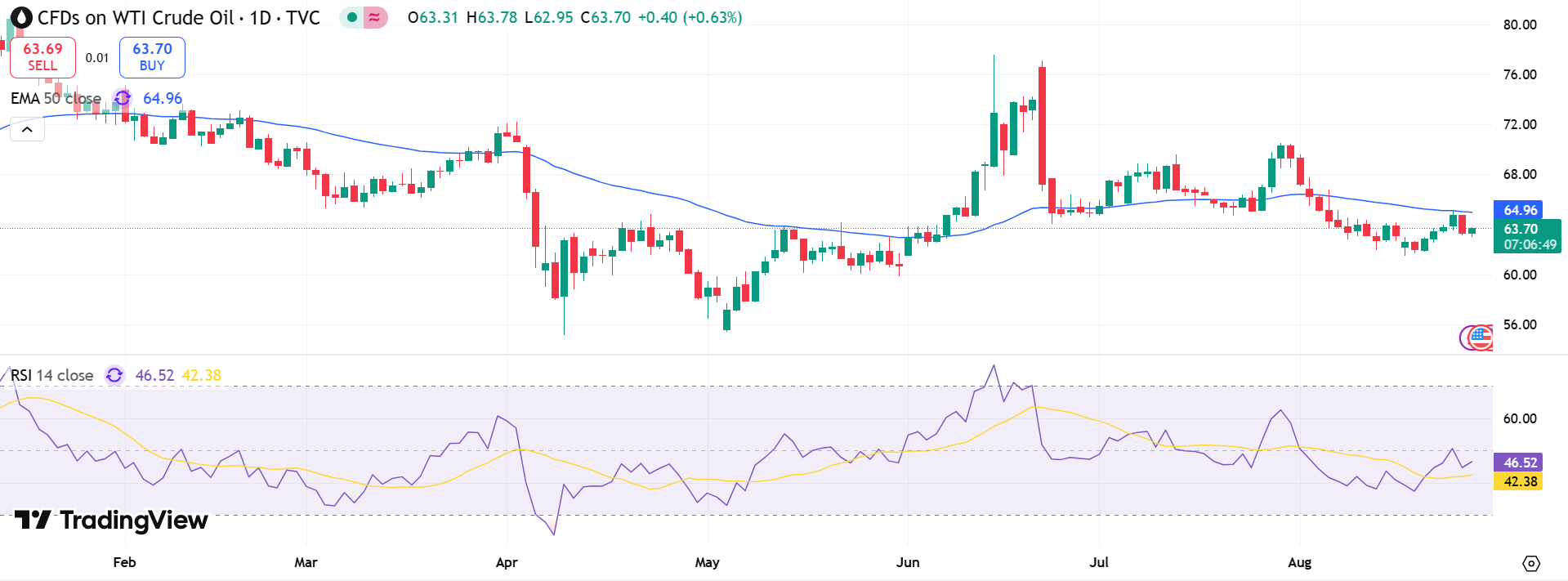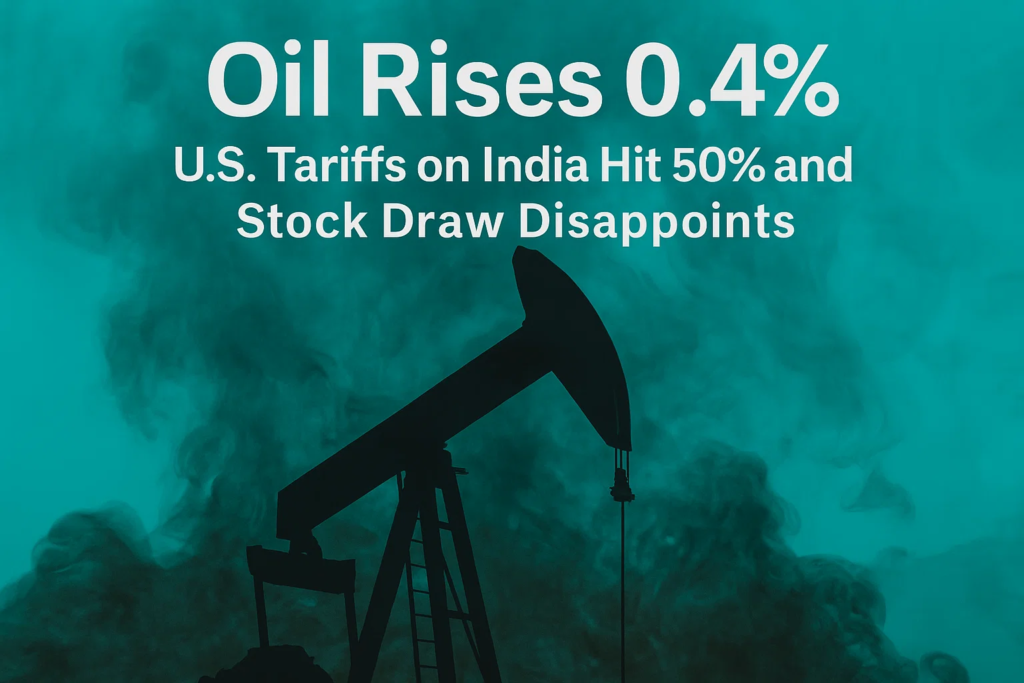Oil prices ticked higher Wednesday, recovering modestly from sharp losses in the prior session as markets assessed fresh trade tensions and tepid U.S. inventory data.
At 08:50 ET (12:50 GMT), Brent crude futures for October gained 0.3% to $66.88 per barrel, while West Texas Intermediate (WTI) rose 0.4% to $63.52. The move followed a 2% decline Tuesday, triggered by fading optimism over a potential peace deal between Russia and Ukraine.
Traders are weighing competing forces: the inflationary effect of new U.S. tariffs on India and weaker-than-forecast declines in U.S. crude stockpiles. Both elements underscore lingering uncertainty in global energy markets.
Secondary Tariffs Target India
The U.S. administration doubled tariffs on Indian imports to 50%, a move aimed at limiting New Delhi’s energy ties with Moscow. The secondary duty, first introduced earlier this year, had briefly curbed Indian refiners’ appetite for Russian crude. Purchases have since resumed despite the higher costs.
Analysts at ING noted:
- Secondary tariffs have failed to fully deter India’s oil imports.
- Russian flows to India remain a key indicator for market direction.
- The Ukraine conflict continues to dominate risk sentiment.
President Trump has presented himself as a mediator in the Russia-Ukraine conflict but has warned of further sanctions against Moscow if negotiations stall. Markets remain highly sensitive to any developments in the geopolitical arena.
Inventories and Long-Term Outlook
The American Petroleum Institute (API) reported a draw of 970,000 barrels in U.S. crude stocks for the week ending Aug. 22, well below analyst expectations of a 1.7 million-barrel drop. Gasoline inventories fell by 2.1 million barrels, while distillates declined 1.5 million barrels, offering slight support to refined product markets.
Investors await the Energy Information Administration’s official report for confirmation, though the smaller-than-expected crude draw added pressure on short-term sentiment.

Looking further ahead, Goldman Sachs projects Brent crude to decline into the low $50s by late 2026, citing rising global supply and average oil surpluses of 1.8 million barrels per day. The bank estimates that each additional day of OECD commercial stockpiles reduces oil’s fair value by more than $3 per barrel.
Key takeaways from Goldman’s outlook:
- Prices expected to hover near forwards in 2025.
- Brent forecast to fall below forwards in 2026.
- Upside risk: stronger Chinese stockpiling.
- Downside risk: sharper Russian supply cuts.
Goldman added that if China accelerates inventory growth, Brent could hold near $62 in 2026, compared with the bank’s baseline of the low $50s.


